I started Asian/Pacific Heritage Month (APAH Month) with my last post about the month, and as it comes to a close, I wanted to share the following that I learned from a recent Zoom event held by our company for its employees in the wake of the rise in anti-Asian hate around the country. I am grateful for my company’s leadership in the messages it has been sharing in support of Asian Americans & Pacific Islanders (AAPI) and for my colleagues who have been working to organize such events. I know I am digressing yet again from all things postpartum depression on my PPD blog, but as some of you know, I have blogged previously about experiencing racism while growing up, and it’s an issue that is even more important to me now than ever before due to the alarming rise in anti-Asian hate incidents around the country since COVID started. I can’t keep quiet about this. What’s happening isn’t right, and I fully blame the past administration and its racist rhetoric for where we are today. We must counter the uptick in anti-Asian hate with an uptick in education (in schools, in social media, in companies, in communities) about Asian American history. There must be an uptick in flocking (read on to find out more about flocking) and advocacy among the AAPI around the country. We can’t just simply rely on a handful of advocates who are actors, like Daniel Dae Kim, or in government, like Grace Meng.
Thank you in advance for taking the time to read on. But before you do, here is a fascinating read I stumbled across today. It’s a research paper titled “Anti-Asian American Racism, COVID-19, Racism Contested, Humor, and Empathy” written by Peter Huang of the Univ of Colorado Law School. 
In 2020, Dr. Russell Jeung launched Stop AAPI Hate, which tracks Covid-19 related discrimination in order to develop community resources and policy interventions to fight racism. The tracking starting from 3/19/2020-3/21/21 reveals statistics summarized in this report. Other initiatives he’s working on include working with Disney and Tik Tok for messaging to reach young audiences, as it is critical for our future generations to understand the importance of embracing diversity and understanding Asian American history in this country.
Dr. Jeung has been a professor of the San Francisco State University’s Asian American Studies Department since 2002. He is the author of 5 books and co-produced the documentary, The Oak Park Story (2010), about a landmark housing lawsuit involving his fellow Cambodian and Latino tenants. His research interests include the Sociology of Race, the Sociology of Religion, and Social Movements. Dr. Jeung is extensively engaged with his students in conducting community-based, participatory research with Asian American communities. See his complete bio here: https://faculty.sfsu.edu/~rjeung/
Dr. Jeung was invited to speak to employees at my company via Zoom. Below is a summary of the information shared by him, which I wish more people from my company would watch, as it contains such valuable information that I myself didn’t even know before!
PERPETUAL FOREIGNER STEREOTYPE
Dr. Jeung starts with the explanation of the perpetual foreigner stereotype. It is one in which those who look Chinese are objectified as outsiders not to be allowed into the United States. This is different from how Europeans have historically been treated. People viewing Chinese as a threat arose when they first immigrated to the U.S. and this view has always been in the racial subconscious of America. Back in the 1800s, there was yellow peril fear that the Chinese were invading the West with diseases (cholera, etc) and were objectified as outsiders. People yelled racial epithets at the Chinese due to differences in skin color and eyes (and unfortunately that still happens all too often today). The stereotype was based also on the fear that the Chinese were taking away white people’s jobs. This is why the U.S. passed the Chinese Exclusion Act of 1882. During the bubonic plague in 1900, the Chinese were segregated from whites due to the fear at the time that all Chinese were disease carriers.
As a result of the perpetual foreigner stereotype, Chinese and other east Asians have feelings of self doubt when it comes to belonging in the U.S. People are being racially profiled because of political rhetoric and the words “Chinese Virus” and “Kung-Flu” deliberately uttered by the former President to prompt citizens to cast blame on all Chinese. Unfortunately, all those who look Chinese are being lumped together to be victims of the anti-Asian attacks that have been spurred on by the President’s words. The biological virus of COVID has been racialized, causing the assumption and association of all Chinese being disease carriers (and back to the 1800s and early 1900s we go). Such automatic assumptions and racial schema on ways people perceive the world is referred to as implicit bias. When we see the President and hear him say these words over and over, the terms become chemically hardwired in brains that determine how individuals perceive and relate to others based on their race. So, when people see Asians, they think coronavirus. They think of Asians as a threat and they go into fight or flight mode (again, back to the 1800s and early 1900s we go). They either attack or shun us. The physical appearance of looking Chinese is triggering others not necessarily due to intentional racism but implicit bias.
For example, I used to believe an Asian person with a mask on is more likely to be sick with some kind Avian flu simply because we are not accustomed to seeing people wearing masks in the U.S. That is just a conclusion that is drawn based on minimal knowledge of how another culture behaves. The Chinese tend to be more conscious of others and therefore wear masks out of consideration for others. They tend to wear masks to not only protect themselves from getting sick but to ensure that they don’t pass on an illness to others. As we all come out of lockdown, with people looking for someone to blame and take their pent-up feelings of fear and anger out on someone, people who look Chinese are on the receiving end. The previous administration institutionalized the perpetual foreigner stereotype via his racist rhetoric, stopping immigration Visas, banning Chinese scientists from coming into this country, and cutting refugee resettlements. These actions disproportionately impacted AAPI individuals. The repercussions have been insidious and pervasive as with the thousands of verbal harassments and physical attacks registered with Stop AAPI Hate since March 2020 to date…. and even deadly (as with the Atlanta shootings). Stop AAPI Hate was founded to track incidents and hold government accountable (that there would be no exclusion, segregation, detention, deportation and instead proof for governments to do something to address what’s happening). 7% of the cases reported were of people coughing/spitting. 11% of the cases reported were of people pushing, shoving, throwing rocks/bottles and even attempting to run people over with cars.
AAPI have had their own fight versus flight response to what is happening. Our fight response is learning self-defense and carrying mace with us. Our flight response is telling our grandparents to stay indoors and children to stay home from school. But we’ve also had a “flock” response in which we flock together to grieve and find solace, strength and support and to magnify our voices / amplify our concerns with fellow AAPI. Our voices coming together has been critical to the creation of a collective voice, which has not only prompted Biden to create a White House initiative but the DOJ to make policy changes as well. We should flock back to the community in support of Asian-run restaurants and nail salons that have suffered disproportionately (from people fearing they’ll catch COVID from these businesses) with daily early closures to allow employees to go home earlier for safety reasons and with unfortunate lay-offs due to lack of business.
A SYSTEM OF BINARIES & THE MODEL MINORITY STEREOTYPE
During the Zoom, Dr. Jeung showed us a slide depicting the white / black binary on vertical axis and insider (model minority stereotype) / outsider (perpetual foreigner stereotype) on the horizontal axis, and where AAPI fit in. Because we are neither black nor white, we all too often feel invisible and excluded from race relations discussions. We’re either insiders or outsiders. We’re asked where we’re from because the assumption is we’re outsiders and don’t belong here (i.e., perpetual foreigner). We look different, eat different foods, talk differently (some AAPI citizens have accents if they’re not born here and can speak another language fluently), and have different religions (if we’re not atheist or Christian). On the other hand, sometimes we’re perceived as the model minority –i.e., “You’re successful because you’re Asian and hardworking” – and as belonging in the U.S. as white adjacent (we’re doing as well as whites). But when times are tough, AAPI are scapegoated and treated as perpetual foreigners—e.g., in times of war (Japanese incarceration), times of economic downturn (laid-off auto workers killing Vincent Chin), and times of COVID (anti-Asian hate crimes now up over 150%). AAPI are not perceived as real Americans (even though a large percentage of us are born here), and are told to “Go back to China, you fxxxing chink! Go back to where you came from. You don’t belong here.” This is happening to other AAPI that are NOT Chinese—for example, a Latino in LA was punched and shoved and told to go back to China, and an indigenous person in Vancouver was punched and shoved and told to go back to China. There are tons of other cases of this registered via Stop AAPI Hate.
AAPI are not seen as individuals but characterized one way or another based on stereotypes and boxed into this binary situation. On the one hand, many AAPI partner with BLM to dismantle the system that created the white/black binary. On the other hand, many AAPI want the status, power, and privilege of being white. Many AAPI want whiteness to better fit into the society they live in. In my personal opinion from lifelong observations, there are many AAPI who don’t flock with other AAPI because they don’t want their status to be jeopardized. They may shun the Asian parts of themselves and prefer to identify as white Christians, with predominantly white friends living in a predominantly white community and feel no need to identify with other AAPI, acknowledge their ethnic heritage, learn their ethnic language, attend cultural events, and relate to others of their ethnicity, period. In fact, some of them poke fun at other AAPI as if they were white themselves! And that, my friends, is a shame but the unfortunate consequence of the insider/outsider binary. You’re either on one side or the other.
In terms of what we can do to help ourselves, Dr. Jeung encourages us to teach our children about empathy, self-respect, pride, and awareness of systematic injustices and why certain groups have more power. We should teach them how to address micro-aggressions /bullying behavior. If they receive such comments as “I bet you’re good with math” or “Where are you from” they can challenge the stereotypes at hand with “Why do you say (or ask) this?”
ALLYSHIP
In terms of how others can help, Dr. Jeung encourages the following:
- Don’t be a bystander, be an upstander. Those who see something can say / do something. Go to the assistance of the one being targeted and don’t give the attacker any platform to share their racist perspective. If you don’t do anything and stay silent, you’re basically complicit. You can report the incident to Stop AAPI Hate, which is a means to document the extent/types of racist attacks.
- At work, colleagues can reach out to fellow AAPI employees to check on them and show their concern. Management can organize events (like this Zoom event and others throughout Asian/Pacific American Heritage Month) to give AAPI employees space to speak up and share. It would help if Asian styles and perspectives were acknowledged in the workplace, not to mention an awareness that different races are seen and treated differently due to implicit bias.
- Schools can include Asian American history in their curriculum. Speaking of Asian American history, Grace Meng is working on legislation for NY schools to include Asian American history in its schools’ curriculum. Illinois has already done this.
- You can donate to different groups like Asian Americans Advancing Justice.
- You can vote for politicians who promote racial justice.
- Communities can form a diversity group (like my community did last year) to educate residents, advocate for the different ethnic groups that live and work there, and ensure a more inclusive and tolerant environment (race, sexual orientation, disabilities, etc).
- Last but not least, realize that words do matter. Just as “Kung flu” and “Chinese Virus” spoken by the leader of the country normalized hate towards anyone who looks Chinese, leaders of companies can put out messages in support of its AAPI employees to normalize respect towards them and acknowledge their experiences. Faith-based groups and schools should follow suit. Parents should teach their children to be empathetic and to treat others the way they would want to be treated.

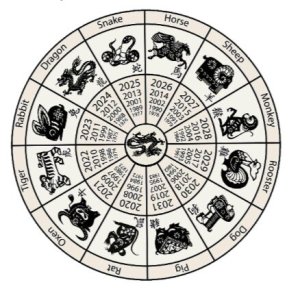



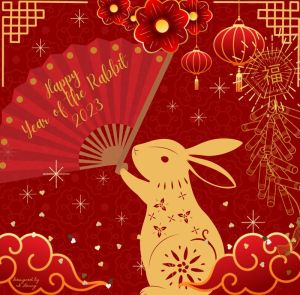 If you’ve been following my blog and saw my Lunar New Year post from last year, you won’t be surprised by this post. Yes, it’s become my annual tradition. And traditions are always good, right?
If you’ve been following my blog and saw my Lunar New Year post from last year, you won’t be surprised by this post. Yes, it’s become my annual tradition. And traditions are always good, right?
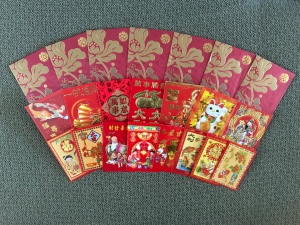




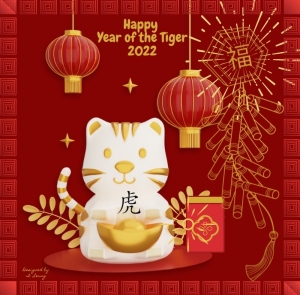 I’m back after a little break from blogging! If you’ve been following my blog and saw my Lunar New Year post from last year, the Year of the Ox, you won’t be surprised with this post. If you’re thinking I’m going to make an annual tradition out of this, you’re right!
I’m back after a little break from blogging! If you’ve been following my blog and saw my Lunar New Year post from last year, the Year of the Ox, you won’t be surprised with this post. If you’re thinking I’m going to make an annual tradition out of this, you’re right!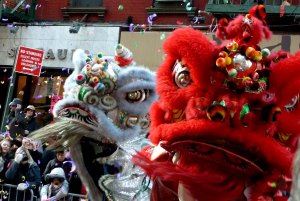

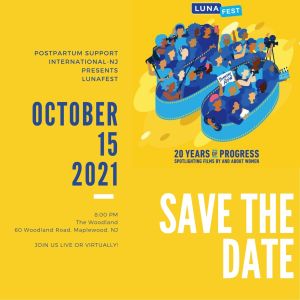

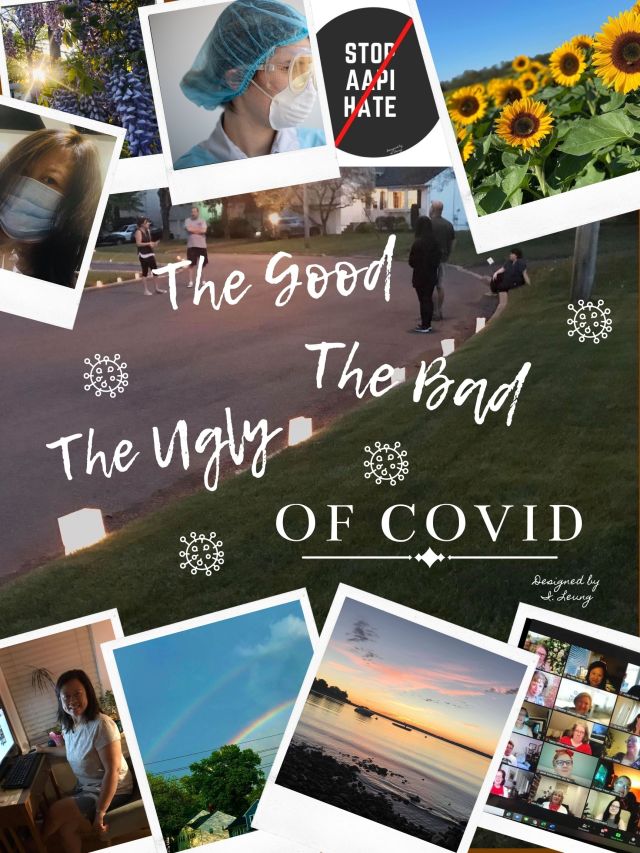 The Ugly:
The Ugly:


